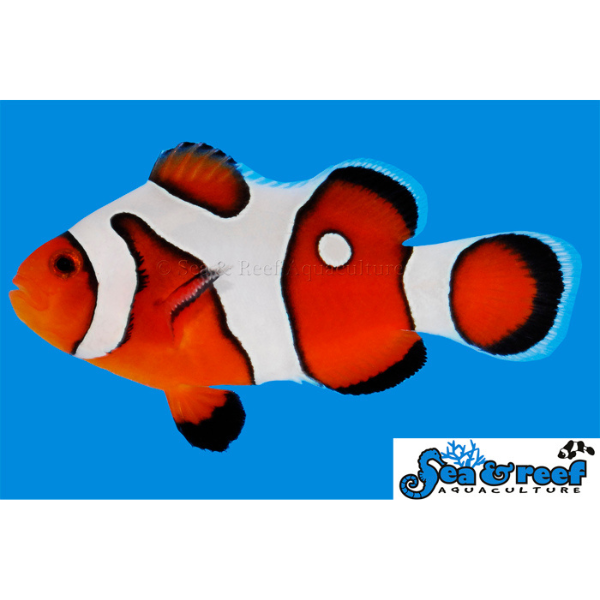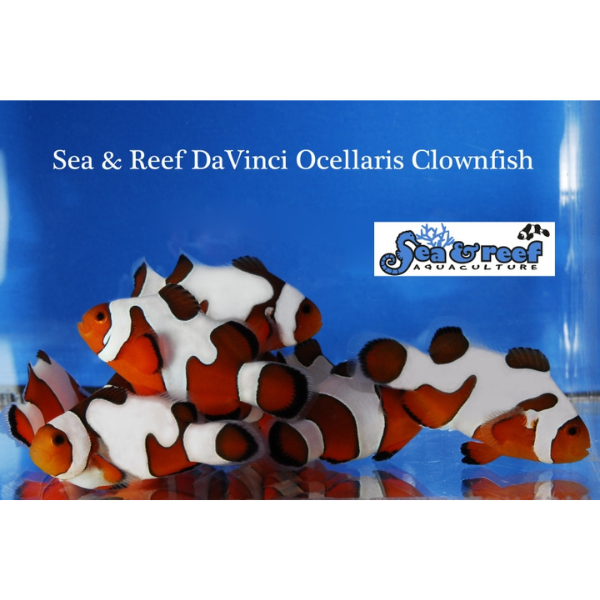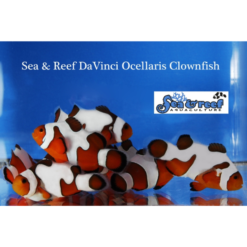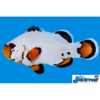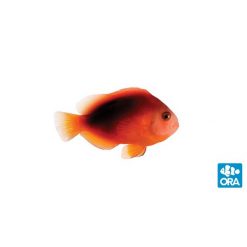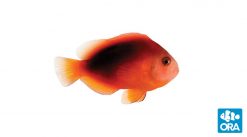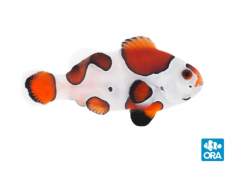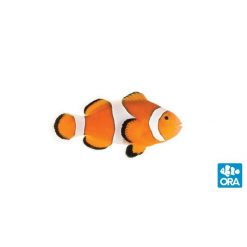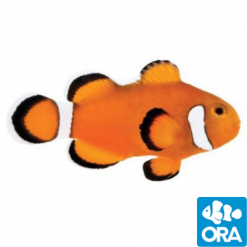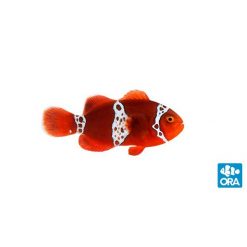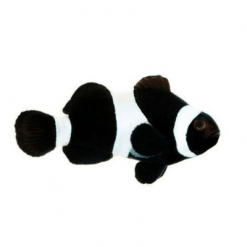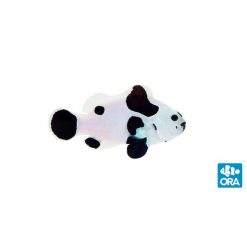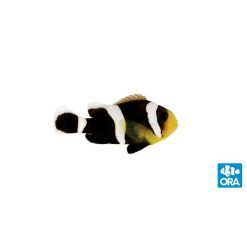About the S&R DaVinci Grade A Clownfish Captive Bred
Care Level: Easy
Temperament: Peaceful
Reef Safe: Yes
Diet: Omnivore
Invertebrate Safe: 3 inches
Minimum Tank Size: 10 Gallons
What do you get when you combine art and science? The answer is DaVinci Ocellaris Clownfish from Sea & Reef Aquaculture. This gorgeous designer clownfish is a variant of Amphiprion ocellaris. The body color and general morphology of Sea & Reef’s DaVinci Ocellaris Clownfish are similar to that of the regular Ocellaris Clownfish, but the stripes are very different. The white stripes have been replaced with interesting curves and patterns – much like an artist painting broad strokes of white paint on a bright orange canvas. No two fish are exactly the same. The DaVinci Ocellaris Clownfish are a cross between our Wyoming White Clownfish (A. ocellaris) and Ocellaris Clownfish (also A. ocellaris).
You might ask why we named this beautiful morph “DaVinci Ocellaris Clownfish”. Well the hobby already have a Picasso Clownfish (A. percula) named after the famous painter Pablo Picasso. The name DaVinci was inspired by the famous Italian renaissance painter, scientist, architect, and pioneer Leonardo da Vinci. The DaVinci Ocellaris Clownfish combine the beauty of art and science.
This Clownfish does not need an Anemone to survive, but will accept many different Anemones as its host, including corals. Their favorite Anemones to call home are the Carpet Anemones Stichodactyla Gigantea or the Magnificent Anemone Heteractis Magnifica.
These fish will accept most fish foods and are perfect for reef tanks. More than one can be kept in the same aquarium and they prefer to be kept in groups.
Clownfish have a very distinct swimming motion that is different from most fish. This is likely passed on through their genetic makeup from centuries of wiggling within the tentacles of Anemones. As the Clownfish wiggles within the stinging tentacles the Anemone’s mucus is likely smeared over the Clownfish’s body, which then protects it from additional stings.
In the wild they live in small groups with one large dominant female, one smaller sexually active male, and a handful of smaller males and juveniles. When the female is lost the largest male will then change sex and become the dominant female with the other Clowns moving up the ladder behind it.

